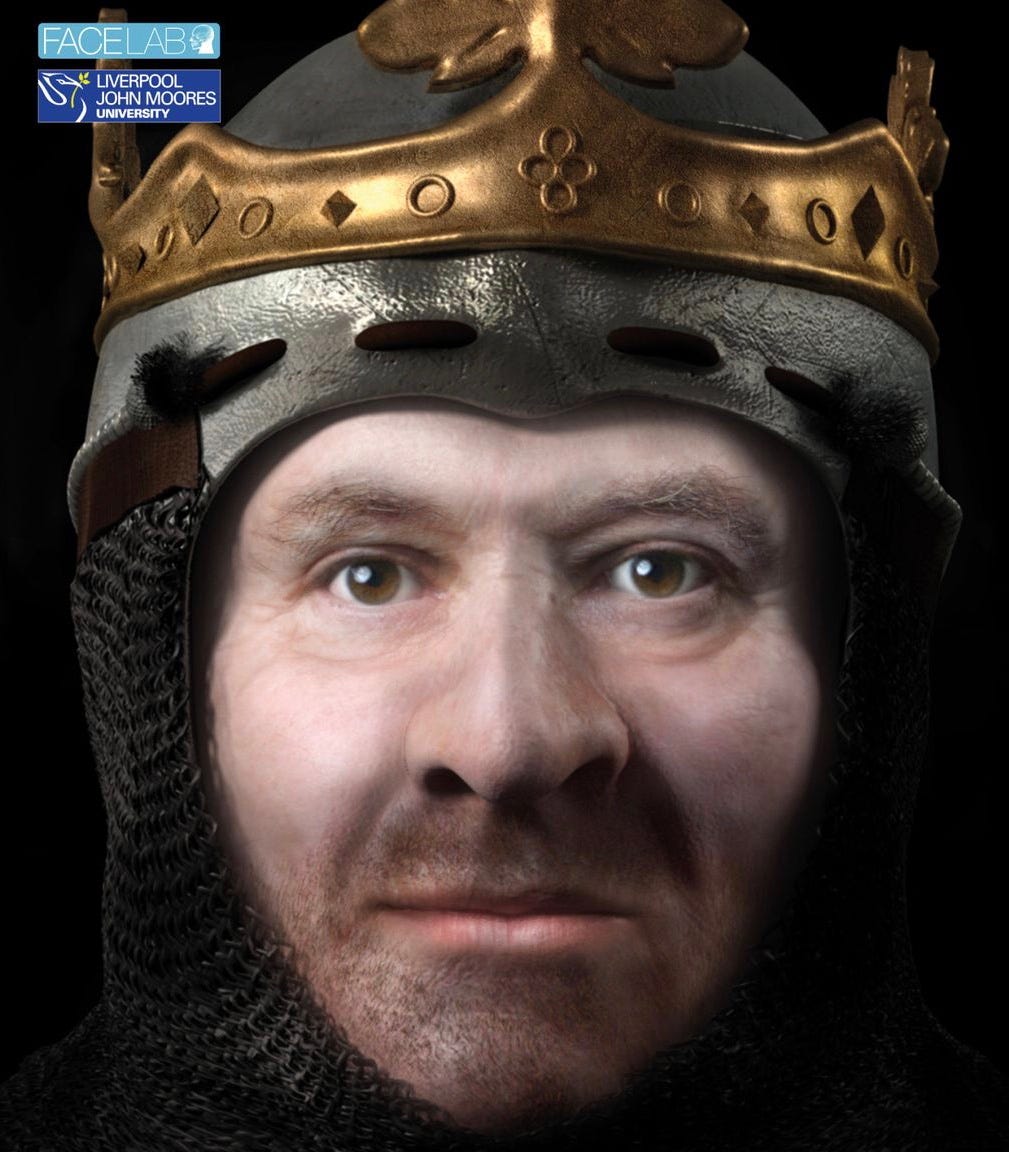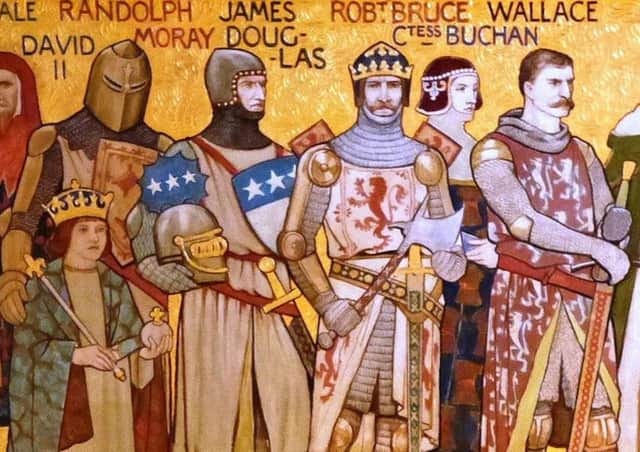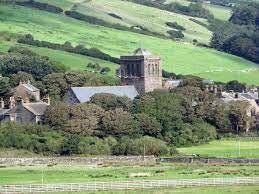Why Robert the Bruce devastated Cumbria
In 1315, the north west of England was ravaged by torrential rain, crop failure and plague. Then down the road from Carlisle came a sight out of everyone’s nightmares
It was the worst of times. In late July 1315 the land for miles around Cockermouth had been transformed into a swamp by months of torrential rain.
The two local rivers had overflowed into the fields. Crops were rotting and animals were dying of water-borne pestilence. Britain was on the brink of the Great Famine that ravaged 14th Century Europe. Then, down the old Roman Road from Carlisle, came a horrific sight straight out of everyone’s recurring nightmares - several thousand fully armed and highly trained Scottish warriors with siege weapons, burning, looting and killing.
King Robert the Bruce and his handsome, daring and violent ally, the Scottish knight James “The Black” Douglas, were mounting a lightning raid that would lay waste to a corridor of territory from Cockermouth to the monastery of St Bees, destroy the manor houses of Cleator and Stainburn, pillage St Bridget’s church at Brigham and reduce much of Cockermouth Castle to rubble, killing many of its 100 armed English defenders.
But why would The Bruce need to attack a small Cumberland town 35 miles south of the Scottish border in what has become known as the First Scottish War of Independence? The answer lies partly in the hot-tempered Bruce’s intense personal frustration.
Despite the crushing victory he won over the English at the Battle of Bannockburn 150 miles north a year before, and his brutal success in grabbing control of Scotland, Edward II still stubbornly refused to acknowledge the independence of the Scottish Crown.
Scottish military morale was sky-high - while England’s had been weakened in two respects. One was because Edward II was still preoccupied by the murder of his hated lover Piers Gaveston by his barons.
The other was the start of the Great European Famine caused by rain-ruined harvests and pestilence among livestock. England was dependent on vulnerable wheat harvests while Scotland subsisted on rain-tolerant oats.
The English also found it harder to assemble the great mass of men and beasts that it required for war, while the Scots had developed a form of mobile attack based on putting relatively small forces into the field made up of tough, self-sufficient men adept at living off the land. The Bruce began imposing Scotland’s will on Northern England immediately after Bannockburn.
The news spread fast that the English had lost that encounter near Stirling Castle. James Douglas led a raid deep into County Durham and attacked the town of Hartlepool “carrying away very much booty from the bishopric,” according to the monks at nearby Lannercost Priory.
The Scottish infantry also marched the length of Northumberland, through Durham, over the Tees and into Swaledale, burnt the towns of Brough, Appleby and Kirkoswald. They destroyed five manors: Penrith, Carlatton, Castle Soweby, Langwathby and Scotby. At Salkeld they tore apart the watermill. They stole the English farmers’ herds and used them to trample the crops before riding off into Liddesdale.
The people of Copeland, terrified at what they saw happening to northern Cumberland, paid the Scots 600 marks (that is, £180,000 in today’s money) for a guarantee of safety from Christmas to Midsummer.
The Scottish king launched continual long distance u-shaped raids. His men were happy to be bribed and did deals with frightened villagers packed into pele towers or inside castle walls, and extracted costly vestments and gold from religious houses. Eventually one-sixth of England was paying tribute to The Bruce. Over a decade of raiding Bruce extracted £20,000 from the six northern counties of England - equal to £5.5 billion today.
The weak and self-indulgent Edward didn’t like the Scottish raids, but he was preoccupied with defeating his hated cousin, Thomas of Lancaster, at the time. And still Robert failed to force Edward II to the conference table.
Furious, he eventually backed his brother Edward Bruce’s ultimately disastrous plan to put pressure on England by invading Ireland. Robert badly needed money to fund the Irish adventure - which is partly why the wealthy corridor from Carlisle though to Cockermouth and the Monastery of St Bees looked so tempting to him. Traditionally, the Scottish kings had retained a huge degree of influence in Northern England.
Bruce and the Scottish church also claimed religious jurisdiction over Carlisle and Cumbria - so he reckoned all the church loot in the area was his, too.
On 14th July 1315, The Bruce fell upon Carlisle with a 10,000-strong army and began besieging the castle on the 22nd. Throughout the 11-day attack the Scots were foiled by the weather. The heavy rains had turned the land around the castle into a quagmire and made the use of siege engines impossible.
But Bruce also sent thousands of his troops south to conduct a campaign of destruction and pillage. Firstly this group trampled down all the crops outside Carlisle, burning the suburbs. After that they moved via the long road skirting the West coast through Cockermouth to St Bees, driving hundreds of cattle out of Allerdale, Copeland, and Westmorland north for use by the Bruce’s army. Taxation records show parishes all along the Scotsmen’s route home along the Cumberland remained impoverished for years afterwards.
Robert the Bruce knew that if his money-raising raid on Cumberland was to succeed, the formidable military stronghold of Cockermouth had to be eliminated. Cockermouth Castle was a link in a formidable chain of defences designed to secure Cumberland for the English Crown.
Cockermouth’s state of the art Norman fortress was then a century old. Its well-armed garrison had the power to stop the Scots moving south along the west coast and to depriving the angry Scottish monarch of his plunder. So here is how Bruce tackled the problem…
......
This is a short extract from our book Secrets of the Crooked River, which is a kind of historical biography of the Northern Lakes and Cumbria, centred around the lovely town of Cockermouth.
You can pick up a copy, and of our latest book Secrets of the Lost Kingdom, from the New Bookshop on Main Street, Cockermouth. It is also available at the Moon and Sixpence, Lakeside, Keswick. You can get it at Bookends in Keswick and Carlisle, along with Sam Read in Grasmere.
Or you can buy it instantly here: www.fletcherchristianbooks.com
Keep reading with a 7-day free trial
Subscribe to Hidden Cumbrian Histories to keep reading this post and get 7 days of free access to the full post archives.








